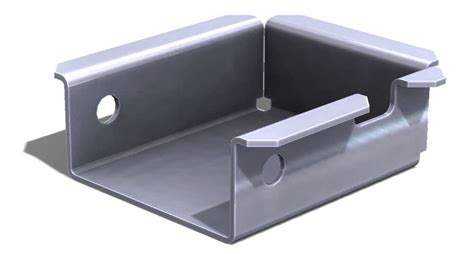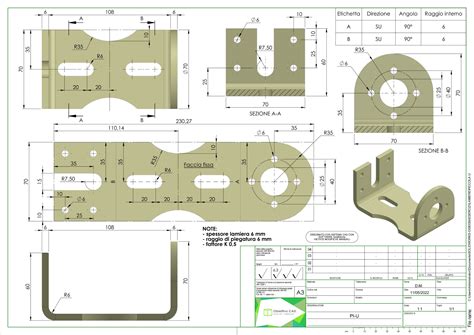creating a sheet metal part from a flat solid In Onshape, you can initiate a sheet metal design using several methods: you can convert a solid part into sheet metal; design from a flat sketch, then fold; use flange tools to add edges and features; or directly import and adapt existing . Sustainably produced in Tennessee, extensively tested and backed by an Environmental Product Declaration, the NEW Carlon® Blue™ fan-rated ceiling box from ABB Installation Products helps keep your home cool and safe. Take the guesswork out of choosing the right electrical box.
0 · solidworks sheet metal design
1 · sheet metal flat solid template
2 · flattened sheet metal parts
3 · flattened sheet metal designs
4 · flat solids template
5 · flat sheet metal templates
6 · flat sheet metal patterns
7 · designing sheet metal parts
In 1952, Richard Kegg, in liaison with MIT, created the first CNC milling machine, Cincinnati Milacron Hydrotel. In 1958, five years after that, he patented ‘Motor Controlled Apparatus for Positioning Machine Tool.’. That marked the .
solidworks sheet metal design
las vegas metal fabricators
You may want to design a sheet metal part from the flattened state. In this case, you create a sheet metal part, then insert bend lines on which to fold the part.In a sheet metal part, create a new configuration. In the FeatureManager . To meet unique sheet metal design challenges, like manufacturability, Solid Edge streamlines the entire sheet metal product development process, from CAD design through flat pattern and drawing development. Effortlessly create sheet metal models from 2D sketches, . Often in design, you need to take sheet metal parts and make flattened out views of them for templates. In this week’s blog, I’ll be looking at the process of going from part to flat pattern, then exporting it, and creating a flat .
In Onshape, you can initiate a sheet metal design using several methods: you can convert a solid part into sheet metal; design from a flat sketch, then fold; use flange tools to add edges and features; or directly import and adapt existing .
In a sheet metal part, create a new configuration. In the FeatureManager design tree, do one of the following: Right-click Flat-Pattern and select Unsuppress. Select Process-Bends and all of . Create sheet metal parts by converting existing parts, extruding sketch curves (including arcs and splines to create rolled sheet metal), or thickening faces or sketches. First, we discuss how to design parts from a flat piece of sheet metal, beginning with defining the initial geometry from a sketch using the base flange feature. Forming the metal into exactly the shape you want requires .You can create drawings of flattened sheet metal parts in the Draft environment. A special template can be applied when a flat pattern drawing is created. This template has tangent edges displayed so that the lines that represent the .
The part I am using in this tutorial was first made by making the flat pattern and then using a single sketch to make one Sketched Bend feature. We need to make configurations for each operation and use the individual .
You may want to design a sheet metal part from the flattened state. In this case, you create a sheet metal part, then insert bend lines on which to fold the part. To meet unique sheet metal design challenges, like manufacturability, Solid Edge streamlines the entire sheet metal product development process, from CAD design through flat pattern and drawing development. Effortlessly create sheet metal models from 2D sketches, and work directly with geometry. Often in design, you need to take sheet metal parts and make flattened out views of them for templates. In this week’s blog, I’ll be looking at the process of going from part to flat pattern, then exporting it, and creating a flat solid from the pattern.
sheet metal flat solid template
In Onshape, you can initiate a sheet metal design using several methods: you can convert a solid part into sheet metal; design from a flat sketch, then fold; use flange tools to add edges and features; or directly import and adapt existing sheet metal designs. There are several ways to make this part: buy a cone with the correct taper, then modify as-needed to weld up to the hopper, and lay out and drill the holes by hand. Or remove all the guesswork, reduce the fabrication time, and instead roll up a laser cut flat pattern yourself.In a sheet metal part, create a new configuration. In the FeatureManager design tree, do one of the following: Right-click Flat-Pattern and select Unsuppress. Select Process-Bends and all of the features after it. Click Edit > Suppress > This Configuration to . Create sheet metal parts by converting existing parts, extruding sketch curves (including arcs and splines to create rolled sheet metal), or thickening faces or sketches.
First, we discuss how to design parts from a flat piece of sheet metal, beginning with defining the initial geometry from a sketch using the base flange feature. Forming the metal into exactly the shape you want requires using a number of sheet metal features throughout the design process.
You can create drawings of flattened sheet metal parts in the Draft environment. A special template can be applied when a flat pattern drawing is created. This template has tangent edges displayed so that the lines that represent the edges of the bends (A) are shown in the drawing. The part I am using in this tutorial was first made by making the flat pattern and then using a single sketch to make one Sketched Bend feature. We need to make configurations for each operation and use the individual SketchBend(s) listed under the Sketched Bend feature to make this work.
You may want to design a sheet metal part from the flattened state. In this case, you create a sheet metal part, then insert bend lines on which to fold the part. To meet unique sheet metal design challenges, like manufacturability, Solid Edge streamlines the entire sheet metal product development process, from CAD design through flat pattern and drawing development. Effortlessly create sheet metal models from 2D sketches, and work directly with geometry. Often in design, you need to take sheet metal parts and make flattened out views of them for templates. In this week’s blog, I’ll be looking at the process of going from part to flat pattern, then exporting it, and creating a flat solid from the pattern.In Onshape, you can initiate a sheet metal design using several methods: you can convert a solid part into sheet metal; design from a flat sketch, then fold; use flange tools to add edges and features; or directly import and adapt existing sheet metal designs.
There are several ways to make this part: buy a cone with the correct taper, then modify as-needed to weld up to the hopper, and lay out and drill the holes by hand. Or remove all the guesswork, reduce the fabrication time, and instead roll up a laser cut flat pattern yourself.In a sheet metal part, create a new configuration. In the FeatureManager design tree, do one of the following: Right-click Flat-Pattern and select Unsuppress. Select Process-Bends and all of the features after it. Click Edit > Suppress > This Configuration to .
Create sheet metal parts by converting existing parts, extruding sketch curves (including arcs and splines to create rolled sheet metal), or thickening faces or sketches. First, we discuss how to design parts from a flat piece of sheet metal, beginning with defining the initial geometry from a sketch using the base flange feature. Forming the metal into exactly the shape you want requires using a number of sheet metal features throughout the design process.You can create drawings of flattened sheet metal parts in the Draft environment. A special template can be applied when a flat pattern drawing is created. This template has tangent edges displayed so that the lines that represent the edges of the bends (A) are shown in the drawing.


More often than not, electrical enclosures must be cooled because internal components continuously radiate heat. Overheating within an enclosure can dramatically reduce the lifespan of the equipment (including PLCs, HMIs, .
creating a sheet metal part from a flat solid|flat sheet metal patterns